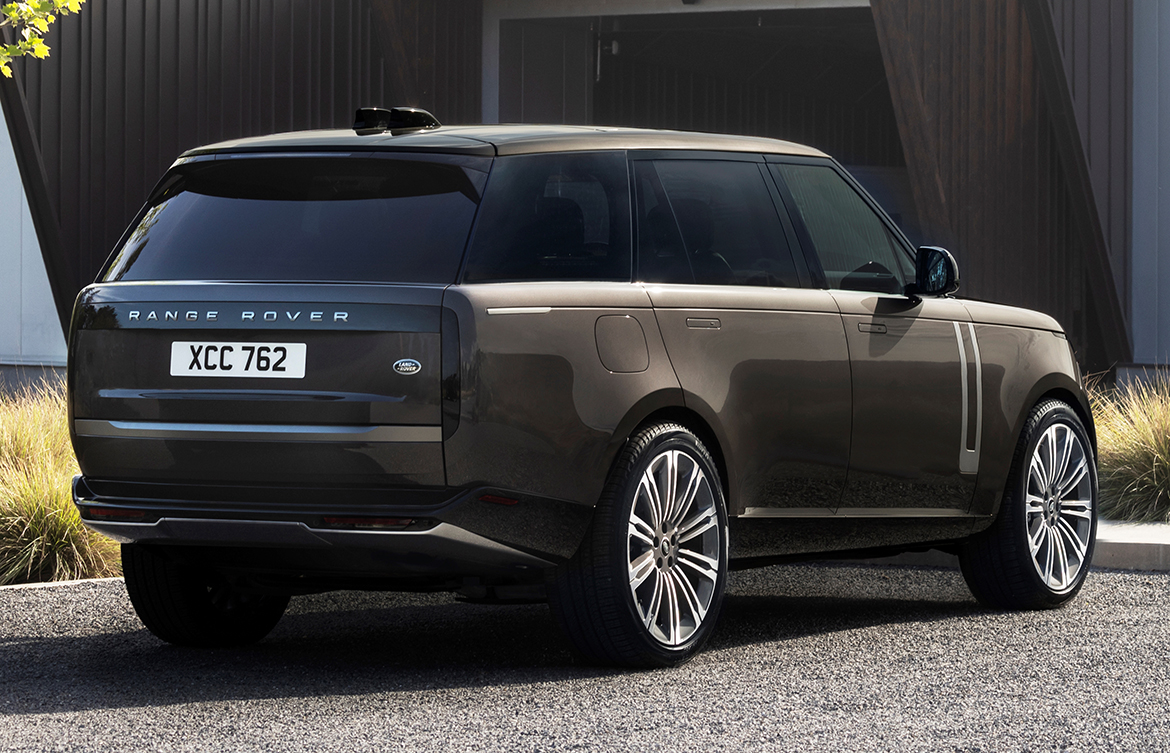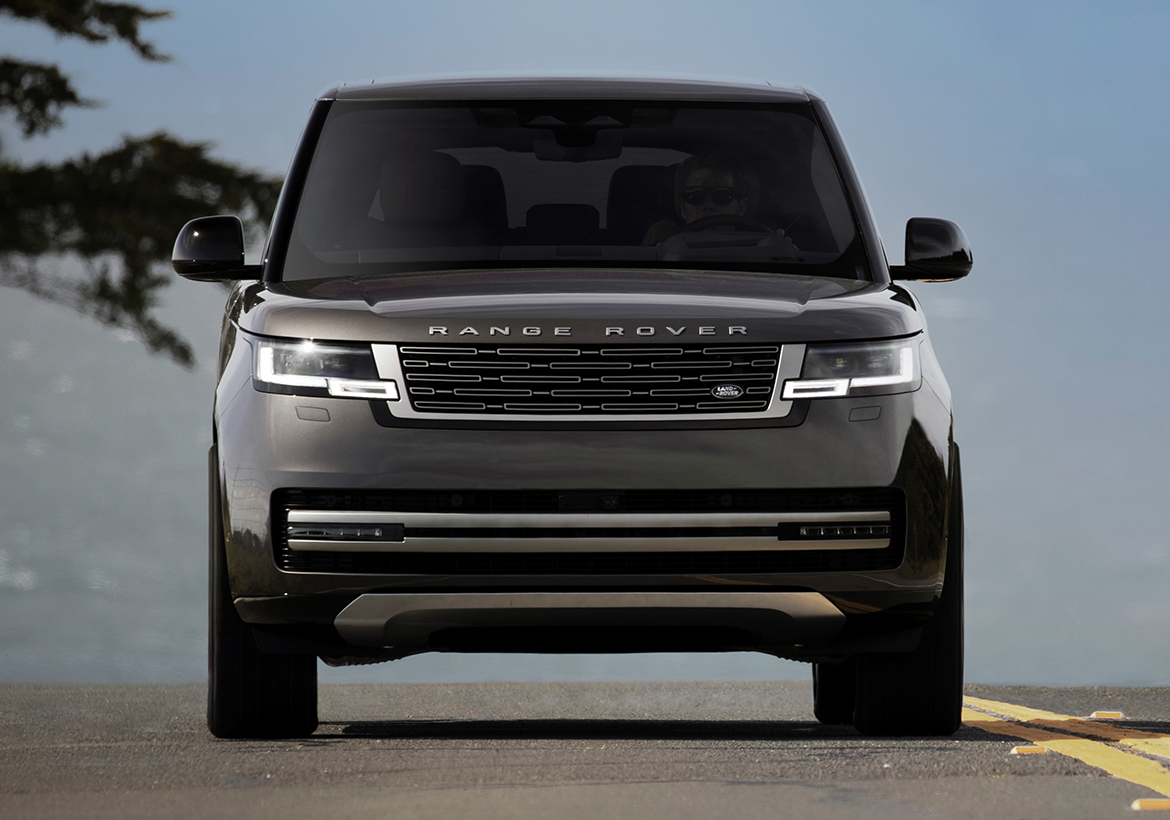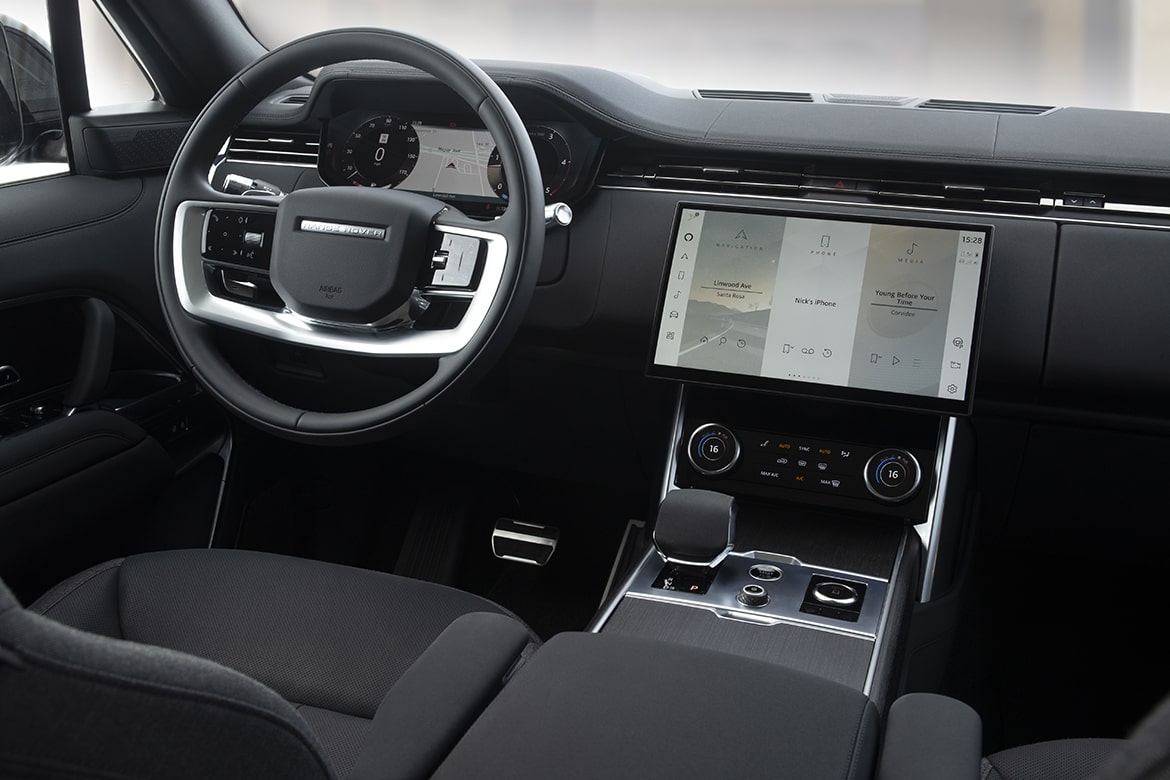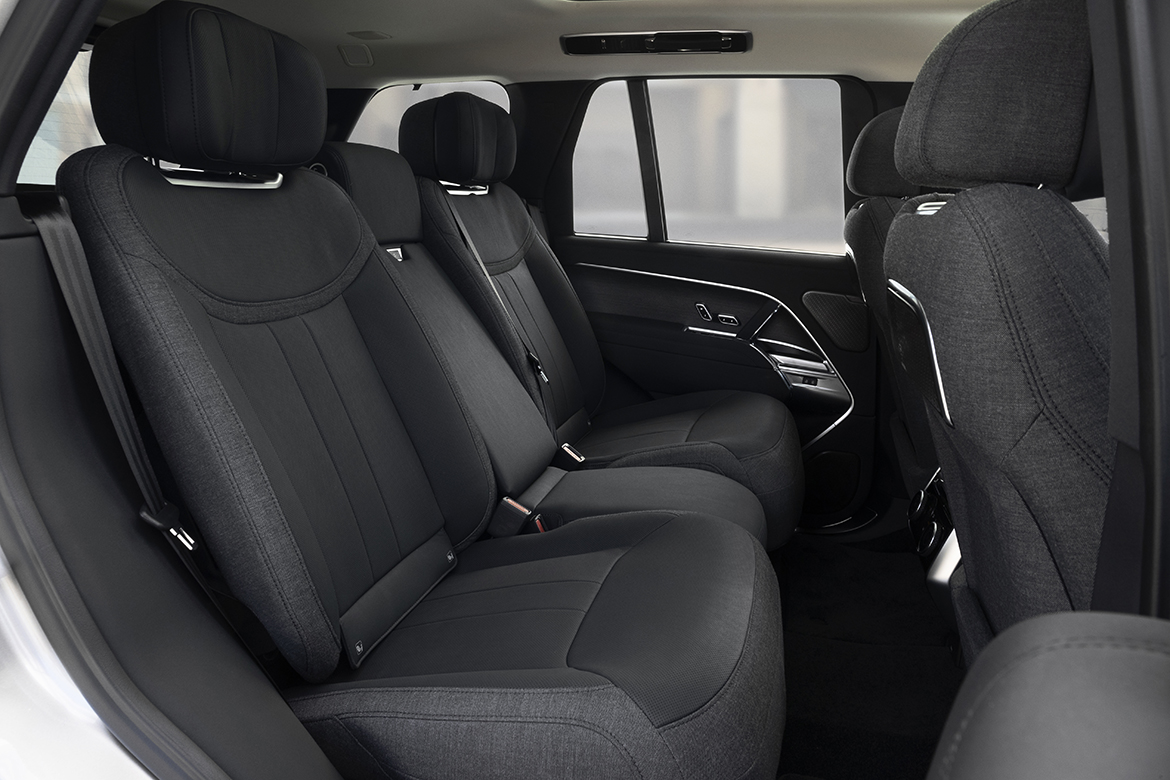Admirable for its “modern luxury” style of great aesthetic taste, surprising in the unexpected design of the rear view, imposing in its size without renouncing elegance. These are the impressions from our first encounter with the new Range Rover previewed at the Jaguar Land Rover design centre in Gaydon a few months ago. It was time to evaluate the fifth generation of the Land Rover family’s flagship on the road and that’s what we had the chance to do in California on the roads of Sonoma and Napa Valley, the area north of San Francisco known for its vineyards and the beauty of the wild coastline. A place frequented precisely by the Range Rover’s affluent clientele, accustomed to luxury and exclusivity as a way of life.
Because luxury is what we are talking about, expressed with great sobriety in every design detail as well as in the lavish on-board equipment. The first glance is convincing thanks to the harmonious proportions (essential for a car over 5 metres long, 2.2 wide and 1.87 high) of the body defined by three main lines, which have always been characteristics of the model: the descending profile of the roof, the horizontal beltline and the line of the sills rising towards the rear “boat tail”, the latter really unexpected due to the graphic treatment of the vertical lights enclosed in the tail. The handles that disappear into the smooth sides are not just a fancy item, but a contribution to aerodynamics and the Cx limited to 0.30 is a remarkable result, especially considering the decidedly vertical windshield, another characteristic feature of the Range Rover.
It is however on board that one appreciates even more the level of evolution and refinement achieved by the new generation. As soon as you close the power-assisted doors – just bring them close and they automatically engage – you find yourself immersed in an environment furnished in a modern style and with fine materials (the wooden parts with a matte finish are very beautiful), but also attentive to the environmental impact in terms of the amount of CO2 emitted for their production (the innovative Ultrafabrics generate only a quarter of the amount compared to the processing of traditional leather, which is still available on request).
Less thrifty is certainly the 4.4-litre twin turbocharged V8 petrol engine of the Range Rover P530 (that’s the number of HP it has), which obviously provides great satisfaction in acceleration. Speed limits on U.S. roads are notoriously strict, so it’s best not to overdo it, but even the other two versions we drove – the more “reasonable” Ingenium inline 6-cylinders, the P400 petrol and the D350 diesel, both mild hybrids – provide more than respectable performance. In any case, the horsepower is not excessive given the over 2500 kg of weight of the car.
One travels in great comfort thanks to the prompt response of the electronic pneumatic suspension, appreciating the dynamic agility assisted by the four-wheel steering (even more useful on the long wheelbase version, with its 5.25 metres and the possibility of a third row of seats), in a silent environment, thanks to the aforementioned aerodynamic refinement as well as the third generation Active Noise Cancellation, the system that cancels the noise produced by the vehicle in motion, including the engine. It will be interesting to have a comparison test drive with the all-electric Range Rover due in 2024 (a less long wait for the plug-in hybrid version, coming later this year).
To complete the test drive, the off-road trails could not be missing and, here too, the mix of power and agility is intertwined with hi-tech. By appropriately combining the Terrain Response programmes, the suspension mode and the other servo-assistance devices – an operation in which Land Rover engineers’ supervision was essential – the car covers complex terrain effectively doing everything on its own, while the 13.1″ on-board display allows the wheels and frontal area to be controlled via HD images from the 360-degree camera system. And during a stop in the country, you discover the split tailgate that lets you sit on the lower flap, a feature of the model since 1970 that today is improved and becomes the Tailgate Event Suite, with a panel of the loading platform that can be positioned as a backrest.
A journey as a passenger in the SV version of the Range Rover is a further fascinating experience: from the display located between the two rear seats, in addition to the unfailing massage and air conditioning functions of the seats, you can control the unfolding of a small table set into the central tunnel and the opening of the sliding panel of the minibar inserted between the rear backrests. Inside champagne, of course: predictable, but always impressive.

















